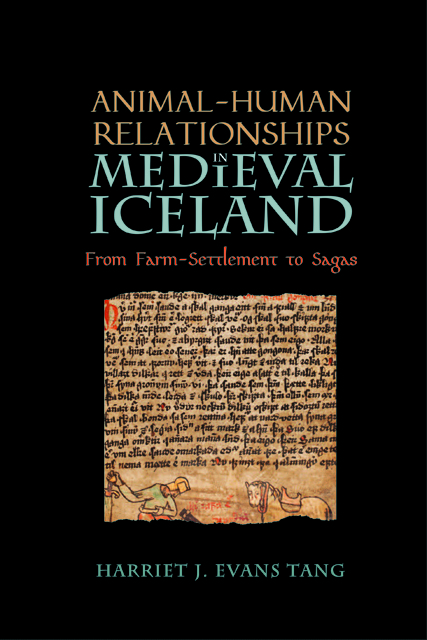Book contents
- Frontmatter
- Dedication
- Contents
- List of Illustrations
- Acknowledgements
- Note on Translations
- The Animal Acts …
- 1. An Animal-Human Settlement
- 2. Home, Sweet Home: Meeting Points on the Animal-Human Farm
- 3. The Animal-Human Community: Legal Tradition in Iceland
- 4. Fostering Relations: The Animal-Human Home in the Íslendingasögur
- 5. The Negative Animal: Absence, Precarity, and Danger
- … And the Man Responds
- Bibliography
- Index
- Nature and Environment in the Middle Ages
5. - The Negative Animal: Absence, Precarity, and Danger
Published online by Cambridge University Press: 11 January 2023
- Frontmatter
- Dedication
- Contents
- List of Illustrations
- Acknowledgements
- Note on Translations
- The Animal Acts …
- 1. An Animal-Human Settlement
- 2. Home, Sweet Home: Meeting Points on the Animal-Human Farm
- 3. The Animal-Human Community: Legal Tradition in Iceland
- 4. Fostering Relations: The Animal-Human Home in the Íslendingasögur
- 5. The Negative Animal: Absence, Precarity, and Danger
- … And the Man Responds
- Bibliography
- Index
- Nature and Environment in the Middle Ages
Summary
We have seen in the preceding chapters that animal-human interactions in the Íslendingasögur are closely entangled with the formation and continuation of the household-farm. The farm is represented as a place of status and productivity for both humans and animals; and animals can be depicted as guardians, respected visitors, and valued members of the human household. They can also be agents of destruction that need to be vigorously controlled, and the attempted integration of animals into the home-place is often viewed with suspicion or leads to a dramatic change of circumstances (for better or worse). This chapter examines the destructive nature of animals (particularly cattle as the largest of the domesticates), and focusses specifically on actions of cattle against haystacks, home, and householder. In all cases the agency of the animals is considered, competing with human and paranormal influences.
Positive relationships between domestic animals and humans in medieval Icelandic society were of vital importance. When something is relied on for survival and economic prosperity, disruption to that relationship would cause serious issues for a household. In the Íslendingasögur, conflicts between animals and humans range from causing the mildest inconvenience to resulting in the death of the householder. In some sagas it is animal deviance from human control that causes the conflict; in some it is the over-attachment of a figure to their animal(s). Lesser consequences are applied to less personal conflicts, for example when an anonymous herd of cattle are driven to cause chaos in the homefield, while the more intense and personal the animal-human relationship, the more significant the consequences for the community in the saga – and perhaps the more judgement passed on the relationship by the storyteller or compiler of the saga. It is often the case that close animal-human relationships appear to be viewed with ambivalence if not downright condemnation by the saga. The story of Freyfaxi and Hrafnkell (pp. 145–55) might be included among these cautionary tales: Hrafnkell’s devotion to his horse leads to serious trouble, though he is permitted to survive his misjudgement. As we will see, Þóroddr in Eyrbyggja saga is not afforded the same luxury.
- Type
- Chapter
- Information
- Animal-Human Relationships in Medieval IcelandFrom Farm-Settlement to Sagas, pp. 184 - 208Publisher: Boydell & BrewerPrint publication year: 2022



